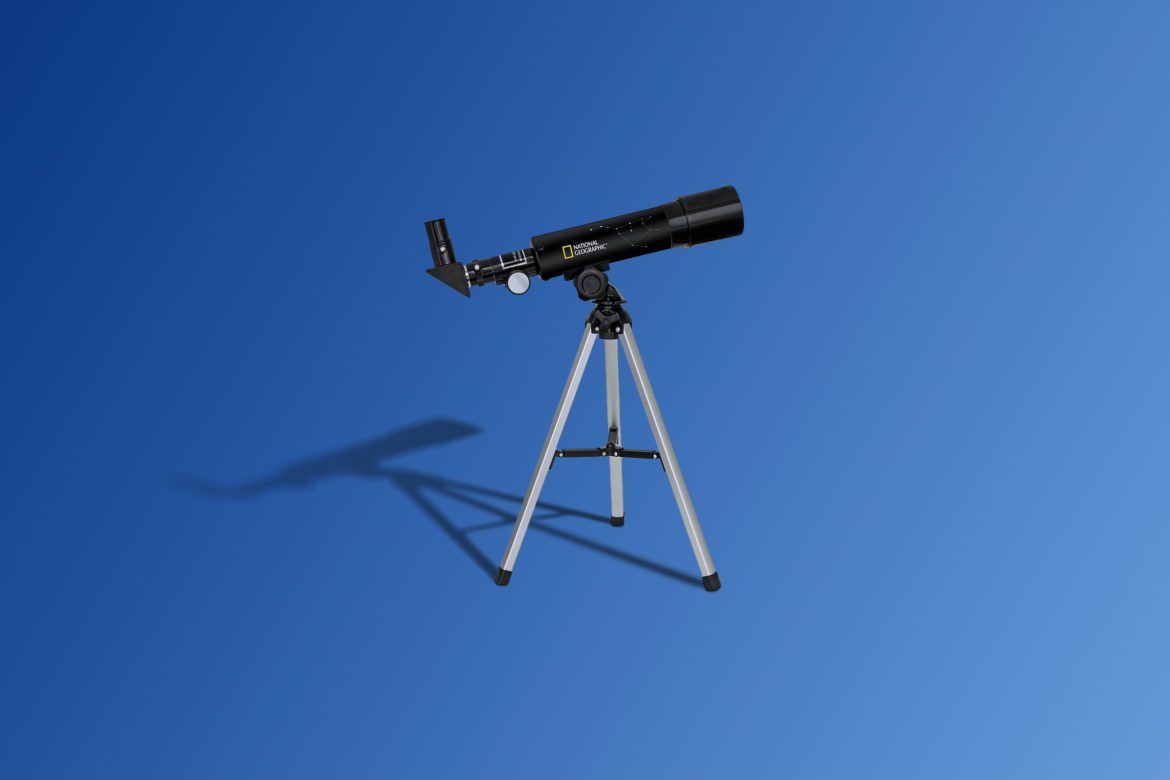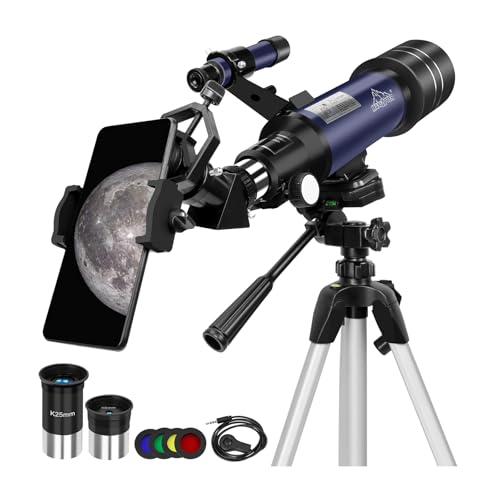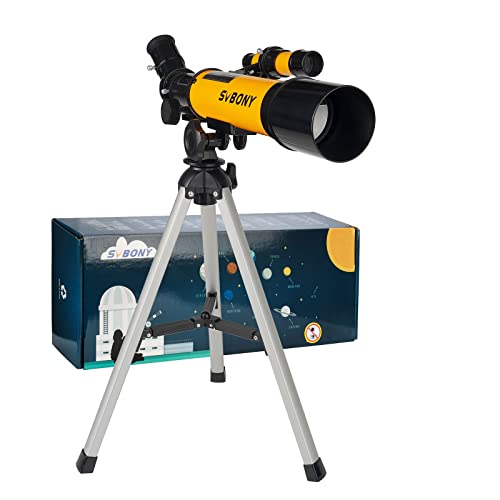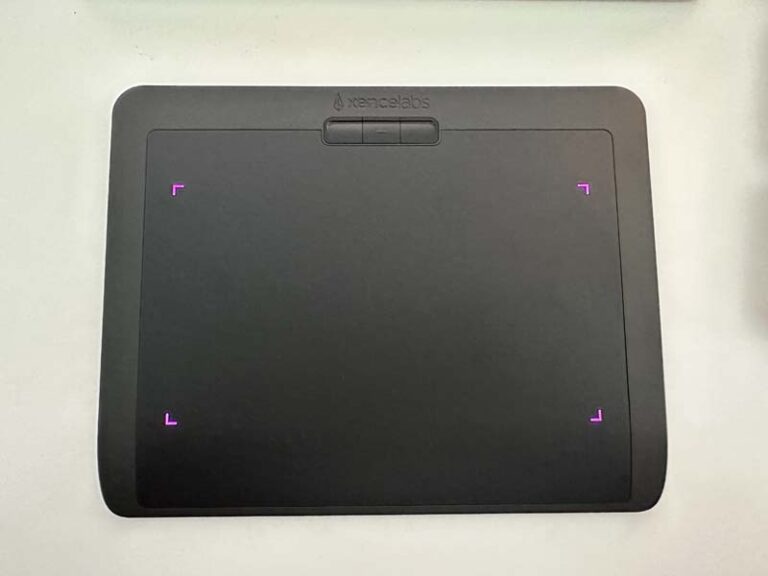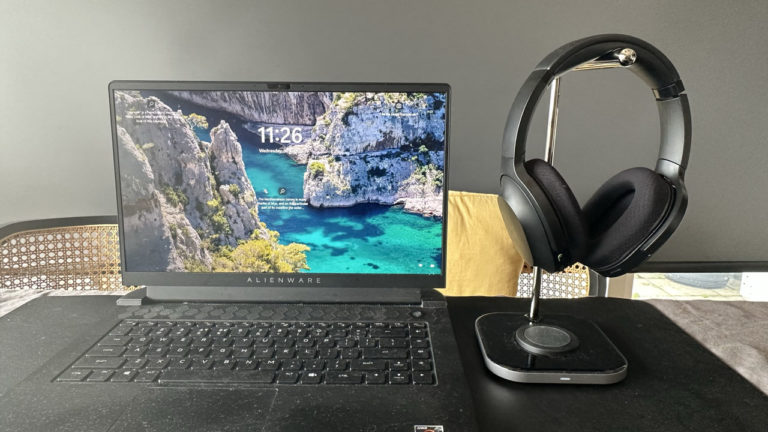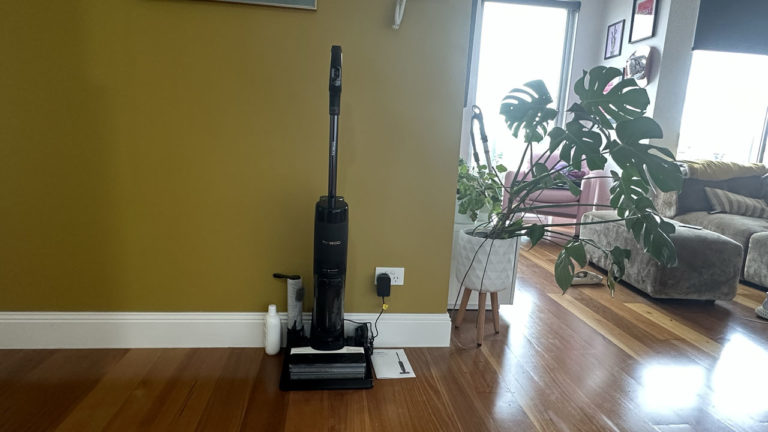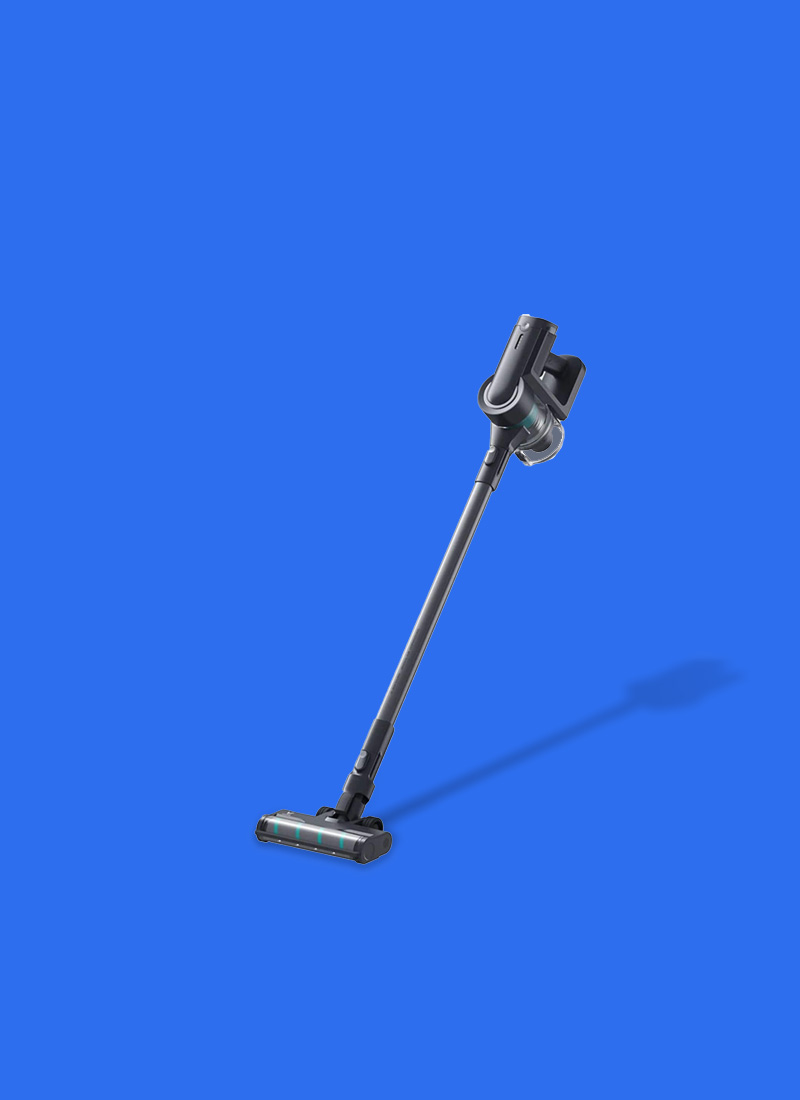ⓘ We are reader-supported and may earn a small commission at no additional cost to you if a purchase is made through one of our links.
Are you new to astronomy and looking to explore the marvellous celestial bodies in the sky? If your answer is yes, you should consider investing in the beginner telescopes listed below. The telescopes that we have chosen for you are not only ideal for observing celestial bodies but can also assist you when viewing terrestrial objects.
Most of the telescopes on this list come with a finderscope that will allow you to locate objects with ease. Additionally, some models feature adjustable smartphone adaptors, which will enable you to take clear pictures of the moon, planetary bodies, star clusters, etc. Under the right lighting conditions, most beginner telescopes can provide you with high-quality images of the Orion Nebula and Andromeda Galaxy.
TL;DR: The #1 Beginner Telescope for Most People 👇
With a 50mm aperture and a focal length of 360mm, the beginner telescope by National Geographic is ideal for viewing the moon, landscapes, planets, and stars.
The telescope comes with a 20mm (18X) and 6mm (60X) eyepiece for customised viewing. If you looking for a high-quality telescope that is portable, this may just be the right equipment for you!
All the beginner telescopes in this guide will deliver exceptional results, especially when used for lunar viewing. Furthermore, these telescopes are ideal for both kids and adults, so you can buy them without worrying about anything. If you are in rush, click on the quick links below to get to the telescope of your choosing:
The Best Beginner Telescopes to Buy Today in Australia
- Best for Viewing the Moon: ESSLNB Telescope for Beginners
- Best Telescope for Astrophotography: Maxlapter Telescope for Beginner’s Astronomy
- Best for Most People: National Geographic Telescope 50/360
- Best Travel Telescope: MAXLAPTER 70mm Beginner Telescope
- Best Value: Celestron 21039 Power Seeker Telescope
- Best Multi-function Telescope: SVBONY SV502 Telescope for Kids
1. Best for Lunar Viewing: ESSLNB Telescope for Beginners
Why we like it:
- 80mm aperture for high light transmittance
- Coated optical glasses for optimum image clarity
- Low and high magnification settings for different viewing needs
- Fitted with a 128-degree diagonal prism for high-quality erect images
What customers say:
“This telescope is great. It is easy to use, the tripod is easy to set up and adjust. I’ve never used a telescope before and there are definitely things to learn to use it more effectively, but we already have a great detail of the moon and a couple of planets.”–Jen
The ESSLNB Telescope for Beginners is our top pick because it is sturdily built, easy to set up, and portable. But most importantly, it will provide you with high-quality images of the moon and other celestial bodies in a clear night sky. This is a refractor telescope, meaning it uses lenses to bend and focus light from the object being viewed.
It features an 80mm aperture, which collects just the right amount of light, thus providing you with clear images under the right lighting conditions. The other reason why we chose the ESSLNB ES2012-80 as the first pick for the best beginner telescopes is that it has the largest aperture on the list.
When it comes to telescopes, the larger the diameter of the aperture, the better. This translates to sharper and brighter images that are equally detailed. We tested this telescope in the countryside where there is minimal light pollution to see how it performs. As earlier stated, it is very easy to install, thanks to its well-built alt-azimuth mount.
We had no problem adjusting the telescope upward, downward, toward the left, or right. This allowed us to view the moon with ease. We used both K9mm (44X) and K25mm (16X ) during the testing process. All two attachments offer good eye relief and were helpful in different viewing applications.
Also, we attached the included Barlow lens (3X) for additional magnification. The eyepieces are easy to attach and remove. As such, we were able to switch from one accessory to another with no fuss. The other thing that we like about this telescope is that it comes with a smartphone adaptor for added convenience.
With the help of this accessory, you will be able to take videos and photos of celestial objects from your phone. Moreover, the smartphone adaptor has a 10X eyepiece that will give you a clear view of the moon. What’s more, the 5X20 finderscope will help you locate objects before viewing them through the telescope.
The ES2012-80 comes with a convenient carrying bag for easy portability, so you can carry it from one viewing location to the next without damaging or losing any of the components. Our only gripe is that the user manual does not explain how or when to use the different eyepieces included in the kit.
2. Best Telescope for Astrophotography: Maxlapter Telescope for Beginner’s Astronomy
Why we like it:
- High-quality optics for bright and clear images
- Comes with a smartphone holder for astrophotography
- Adjustable mount for multi-angle viewing
- Straightforward design for easy assembly
What customers say:
“Bought this telescope as a birthday present for my granddaughter as she loves looking at the night sky. Great to use with a smartphone for explanations and exploring. Very good value for money. And she loves it.”–Vicki
The ESSLNB ES2012-80 may be first on the list, but the Maxlapter Telescope for Beginner's Astronomy comes in a close second. Both telescopes have a focal length of 400mm and also come with a rich assortment of accessories that can assist you when viewing celestial and land objects. However, the Maxlapter EM-852-3 has a 70mm aperture, making it 10mm narrower than the ES2012-80.
On the plus side, it comes with a 5X24 finderscope and two Barlow lenses (3X and 1.5X) for optimum magnification. On top of that, you will get 25mm (16X) and 6mm (67X) eyepieces for customised viewing. You can swap the eyepieces according to your needs.
The 6mm eyepiece will provide you with clear magnified images that will allow you to observe different parts of the moon in great detail. This is not to say that the 25mm won’t deliver high-quality images. It is just as reliable but the only difference is that it won’t give you a close-up view as the 6mm eyepiece.
In addition to this, you can attach your phone to this telescope using the adjustable smartphone holder. There are up to 4 moon filters that you can use for a comfortable lunar viewing experience. The filters not only improve contrast but also cut down the moon’s light, thereby reducing eye fatigue.
But that is not all; the lenses on this telescope are multi-coated to ensure you get sharp images of whatever you are viewing. The quick adjustment knobs will allow you to customise the telescope to match your needs. With that being said, you can zoom in or out to get the best view of distant objects.
And since it is specially designed for beginners, first-timers won’t have a difficult time using this telescope. The multi-angle tripod enables you to adjust the telescope accordingly without it coming loose.
Since the tripod is height adjustable, you can raise or lower the telescope based on your viewing requirements. Still on the tripod, it has a hook at the bottom on which you can attach more weight to increase stability. This way, the telescope will be less likely to fall over.
3. Best for Most People: National Geographic Telescope 50/360
Why we like it:
- Diagonal mirror for comfortable viewing
- Lightweight aluminium tripod for easy portability
- Durably built to give you long-lasting service
- Separate eyepieces for adjustable magnification
What customers say:
“You can observe stars with the telescope, Jupiter and the moon. It is easy to assemble and suitable for children or even beginners…”–Zoro
The National Geographic Telescope 50/360 is also another great piece of equipment that you can use for lunar viewing. Under the right conditions, it can as well be used for observing planets and other celestial bodies. We recommend this refracting telescope to kids and beginners because it has a simple design and is thus easy to operate.
It comes with 6mm (60X) and 20mm (18X) eyepieces and features a 50mm aperture. Although the aperture is narrow compared to that of most telescopes on the list, you can count on this telescope when observing both land and celestial objects.
The ocular eyepieces deliver good quality images that will allow you to see the craters on the moon. Because the aperture is small, you should consider setting up the telescope in low-light areas to get a clear view of celestial bodies.
More importantly, the diagonal mirror on this unit bends light at an angle to give you erect images. This allows for comfortable viewing even when scoping objects that are several kilometres from earth. The fact that it does not come with multiple accessories makes it one of the most compact telescopes on the list.
Furthermore, the tripod stand is made of lightweight aluminium for portability purposes. Additionally, it is foldable, so you can tuck it away when you are done with the observation. Nonetheless, the tripod is not height-adjustable, so you’ll have to prop it atop something to get a good viewing angle in some scenarios.
And like most telescopes, the optics are coated to give users the best viewing experience when observing bright objects. This telescope is made of durable materials that will provide you with long term service. Also, it requires minimal maintenance, so it won’t frustrate you.
The alt-azimuth mount allows you to track and locate objects with the utmost ease. All the adjustment knobs are ridged to prevent slippage when customising the telescope. If you want to have a glimpse of some of the celestial bodies in the solar system, the National Geographic Telescope 50/360 is one of the reliable options that you can use.
4. Best Travel Telescope: MAXLAPTER 70mm Beginner Telescope
Why we like it:
- Its multi-functional design makes it ideal for planetary, lunar, and landscape viewing
- Finderscope for quick tracking of objects
- Moon filters for enhanced image quality
- Large aperture for maximum light transmission
What customers say:
“Absolutely loving my purchase, we’ve spent several hours looking at the stars, galaxies planets and the moon, if you’re on a tight budget and your child shows an interest in space, this telescope is well worth the money.”–Julie carter
With a focal length of 400mm, the MAXLAPTER 70mm Beginner Telescope will ensure you get bright and sharp images when observing planets, the moon, stars, and other objects. This refractor telescope shares several similarities with the Maxlapter EM-852-3 and even has the same design.
Both models come with K25mm and K6mm eyepieces. The former will provide you with a magnification of 16X, while the latter offers 66X. With the 25mm eyepiece, you can comfortably view the entire phase of the moon. The 6mm eyepiece, on the other hand, provides a detailed view of the lunar surface.
If you like taking pictures of the moon, you will benefit greatly from the smartphone adaptor that comes with this telescope. To make it even better, the manufacturer has included a wired shutter control that will allow you to take shots without interfering with the placement of the telescope. Moreover, the phone adaptor is adjustable, so you can tilt it depending on where you are standing.
The Maxlapter WR852-3 is not only ideal for observing celestial bodies but can also come in handy when viewing landscapes. It can also be used for bird watching. Because the lenses are fully coated, you can even use this telescope to view land objects during the day.
It offers excellent colour rendition, so all objects will appear as they are. When viewing the moon and bright planetary bodies, you can attach any of the four filters. They will attenuate the brightness, thus protecting your eye. The telescopic tripod allows for easy adjustments and is also lightweight.
With the adjustment handle in place, you can make a 180-degree vertical tilt and 360-degree rotation when locating objects in the sky. Plus, you can adjust the height of the tripod from 48cm to 114cm. Thanks to its compact design, you can carry the Maxlapter WR852-3 to your favourite viewing location without breaking a sweat.
5. Best Value: Celestron 21039 Power Seeker Telescope
Why we like it:
- Barlow lenses for maximum magnification
- No-tool setup for user convenience
- Coated optics for better image quality
- Comes with multiple eyepieces for different viewing applications
What customers say:
“Bought as a gift but it looks okay and the magnification is satisfactory, sturdy enough for normal use, complete with extra lenses. I would think any budding astronomer would be happy to start with this model.”–Peter Joiner
Celestron is a brand that has earned a good name when it comes to making astronomical telescopes. So you can go for the Celestron 21039 Power Seeker Telescope knowing that it won’t disappoint. It is crafted from premium quality materials, so it won’t easily get damaged, provided that you give it proper care.
The Power Seeker has a focal length of 600mm, which is great given that most of the telescopes on the list have a focal length of 400mm. It will provide you with larger images, so just ensure that you attach the right eyepiece. This refracting telescope comes with 3 magnification eyepieces (30X, 50X, 150X) that will provide you with different sizes of images.
To add to this, there are two Barlow lenses that can help you increase the magnification power of the telescope. To get maximum magnification, you should attach the 3X Barlow lens. The mount has a simple design and is equally easy to set up, thus making it ideal for amateurs.
Additionally, you won’t have a hard time attaching the eyepieces to the telescope. As such, you can adjust the optical system within the shortest time possible. The attached finderscope is just as reliable as the main telescope and will allow you to locate objects with pinpoint accuracy.
The Celestron 21039 will allow you to observe star clusters, planets, and the moon. If the viewing location has no light pollution, you’ll be able to see the Andromeda galaxy and Orion nebula. Since this is a basic telescope, you can only view the mentioned bodies if the conditions are right.
Also, ensure that you adjust the attached eyepiece accordingly to get a clear image. This telescope can also come in handy when viewing terrestrial objects. Furthermore, it is reasonably priced, making it a great choice for those on a tight budget.
6. Best Multi-function Telescope: SVBONY SV502 Telescope for Kids
Why we like it:
- Micro-speed focal wheel for quick customisation
- 50mm aperture for clear and bright images
- Humanised design for easy operation
- 360° alt-azimuth for limitless object tracking
What customers say:
“I got this telescope for my Grandson for Christmas and he loves it. He was excited to tell me how close up things looked when he used it.”–Susan McCormick
The SVBONY SV502 Telescope for Kids may be last on the list, but it is one of the best beginner telescopes currently available on the market. We placed it last because it has a short focal length of 360mm. The aperture is also narrow compared to most of the options that we have listed above.
However, this does not mean that it is not efficient. Besides, the specifications are well within the range of a basic telescope. The telescope comes with a K20mm eyepiece that will enable you to view far-away celestial objects like the moon in great detail.
In addition to this, the optical system is made up of high-quality components that will provide you with crisp images. It features an easy-to-use micro-speed focusing wheel that will allow you to adjust the lenses to match your viewing needs.
Like the ESSLNB ES2012-80, this telescope has a 5X20 finderscope that will make your work easier when locating objects in the sky. The focus wheel is rubberised to prevent slippage when making adjustments. It also offers a comfortable grip and is great for kids.
The adjustable mount allows for smooth adjustments, making it easy to track objects. It will allow you to make horizontal rotations up to 360 degrees. Plus, you can make a 90-degree vertical tilt without using any tool. The SVBONY SV502 is versatile in that you can use it for viewing terrestrial and astronomical objects.
It will deliver clear images in both scenarios, enabling you to observe distant objects. The materials from which this telescope is made are of high quality, so rest assured it will last. On the downside, you will only get a single eyepiece when you buy this unit.
How We Researched the Best Beginner Telescopes
We spent over 15 hours researching the best beginner telescopes Australia has to offer. To start off, we scoured the web to better understand what makes a good beginner telescope. We consulted professional astronomy sites and also did additional research to ensure you get the best telescopes.
Once we were done, we came up with a criterion for selecting the best beginner telescopes currently available in the Australian market. During our search, we noticed that most people often buy refractors as their first telescope because they are easy to use and also require minimal maintenance.
As such, we only went for refracting telescopes for this review. We chose the above-listed telescopes based on the Diameter of the aperture, Focal length, Magnification, Focal ratio, Size, Mount type, and Resolving power. Additionally, we considered the independent customer reviews and product ratings on Amazon Australia.
We further tested one of the telescopes—the ESSLNB Telescope for Beginners to get first-hand experience on its overall performance. For this step, we used the telescope to view the night sky and also scoped through landscapes. This allowed us to analyse the other telescopes based on our findings and individual product specifications.
Beginner Telescopes: Buying Guide
If you are looking to buy a beginner telescope, there are factors that you need to take into consideration. Also, you should know the purpose for which you are buying the telescope—do you want to see the moon, stars, planets, or landscapes? To determine which telescope is best for your needs, you should familiarise yourself with the basic features and the different types of telescopes that are there.
That said, it would be imprudent to pick the first telescope that comes your way. And since there are countless options to choose from and a long list of specifications to consider, one can easily get overwhelmed, especially if it’s your first time buying a telescope. To assist you in finding the best beginner telescope, we’ve compiled a list of factors that can help you make an informed decision.
Types of Telescopes
Telescopes are often classified based on their optical system. With this in mind, there are 3 basic types of telescopes that you can buy. Each type has its perks and limitations, so ensure that you take your time to pick a telescope that matches your needs and budget.
Refractor Telescope
This is probably the most common type of telescope for beginners. Refracting telescopes are fitted with a large convex lens on one end, which bends light through the tube and passes it onto the eyepiece, thus allowing you to see distant objects. This type of telescope is ideal for viewing the moon, planets, and stars
Refractors are a favourite among beginners because they are easy to operate and equally durable. Additionally, they require minimal maintenance, making them a great choice for first-timers. The price of a refractor telescope may vary depending on size, features, and build quality. All the telescopes listed in this buying guide are refractors, so feel free to select any that piques your interest.
Reflector Telescope
Unlike refractor telescopes which have lenses, reflector telescopes use strategically aligned mirrors that collect and reflect light from objects that are far away to give you a viewable image. The good thing about reflecting telescopes is that they are affordable. However, you will have to adjust the optical system from time to time to get clear images when using reflector telescopes.
Catadioptric/Compound Telescope
Catadioptric or compound telescopes use a combination of refractor and reflector optical systems to give you high-quality images of far-away objects. The mirrors and lenses on these telescopes work in tandem, thereby providing you with a high-performance unit that you can rely on when stargazing. Compound telescopes can be an excellent option for astrophotographers. On the downside, they don’t come cheap and may not be the best choice for those who are new to sky watching.
What to Consider When Buying a Beginner Telescope
Knowing the different types of telescopes available on the market is not enough. Besides, different brands make a range of telescopes within the above-mentioned categories, so you have to consider other factors to find the most ideal telescope for your needs:
Aperture Size
The first specification that you should take into account when shopping for a telescope is the diameter of the aperture—the opening through which beams of light enter the telescope. Large-diameter apertures allow more light to pass through the telescope, thus making distant objects more visible and brighter.
As such, it is recommended that you go for a telescope with a wide aperture to get high-quality images. However, the diameter of the aperture determines the telescope’s overall size, weight, and price. The telescopes on this list have 50mm to 80mm apertures, so you can pick any that is within your budget.
Size
Telescopes come in different sizes. As stated above, the size of optical components like the aperture determines how large or small a telescope can be. When it comes to size, you should consider the available storage space.
Also, if you intend to carry the telescope from one viewing location to another, ensure you choose a sizeable unit that you can move with ease without damaging any of the components.
Focal length
Focal length refers to the distance between a telescope’s optical centre and the focus point. A longer focal length is preferred because it reduces the telescope’s field of view while increasing magnification. So it is right to say a telescope with a shorter focal length will offer a wider field of view and low magnification. Most of the telescopes on our review list have a focal length of 400mm.
Magnification
A telescope’s magnification power determines the quality of the images that you will get when viewing objects from a distance. Telescopes with high magnification will provide you with large images even when scoping objects that are thousands of kilometres away.
Nonetheless, a high magnification power does not guarantee high-quality images. To get the best results, experts recommend that you pick a telescope with a magnification power that is useful to the focal length.
Resolving power
This is also another important specification that you should consider when buying a telescope. It refers to the telescope’s ability to create distinguishable images of objects that are closely spaced. If you are looking to study the stars, moon, and planetary bodies, you should select a telescope that can effectively resolve details without blurring the image.
Focal ratio
The focal ratio of a telescope can be calculated by dividing its focal length by the diameter of the aperture. For example, the MAXLAPTER 70mm Beginner Telescope has a focal length of 400mm and a 70mm aperture, meaning its focal ratio is 5.7. This can be written as f/5.7.
Mount
A good telescope mount should allow for quick and easy adjustability while remaining steady. The telescopes in this guide use Alt-Azimuth mounts—a type of mounting system that features two axes, which will allow you to make vertical and horizontal adjustments. This means you’ll be able to adjust the telescope sideways, upward, or downward based on the position of the object that you are viewing.
You may also be interested in:
- The Best Smartphone Gimbals for Professional Quality Videos
- The Best Binoculars for Bird Watching, Hunting & Sight-seeing
Last update on 2025-12-25 / Affiliate links / Images from Amazon Product Advertising API

